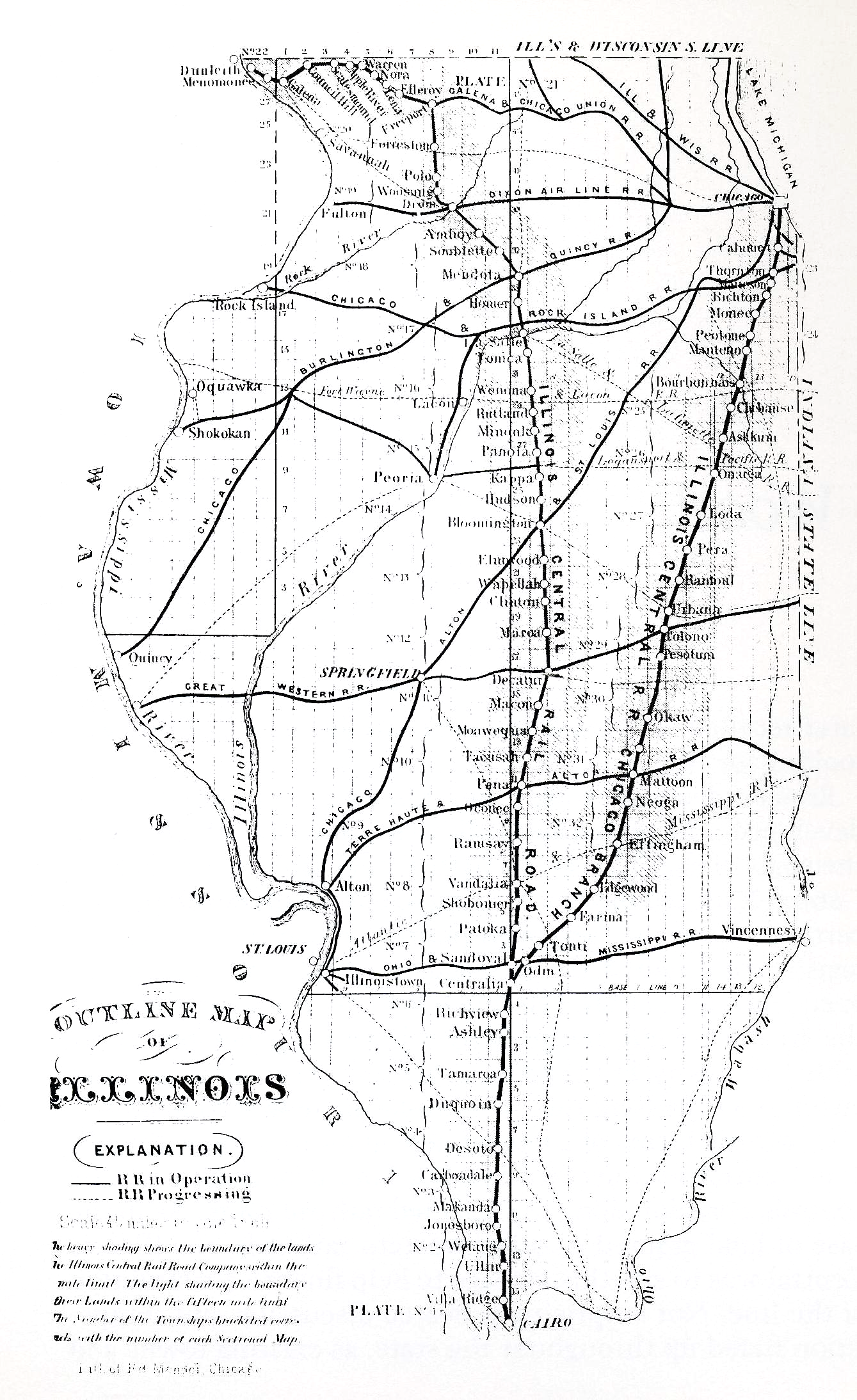While the state celebrates its bicentennial, the Chronicle is expanding local history offerings with a series written by Scott Mehaffey on the origins and history of Flossmoor. This first installment looks back to roots of the village.
The Land Ordinance of 1785 established the rectangular survey system for mapping lands of the United States. In 1803, the first survey began of lands that would become part of Illinois. In 1816, Congress established the Office of the Surveyor General for Illinois and Missouri, and the State of Illinois was formed in 1818. (Visit the state website for more bicentennial information).
When Cook County was organized in 1831 with approximately 100 residents, it encompassed much of what is today Lake, DuPage, Will, McHenry and Cook counties. As the surrounding counties developed, Cook County lost over half its territory, conforming to its current boundaries by 1839. European settlement increased rapidly following the Treaty of Chicago in 1833, and the relinquishing of lands east of the Mississippi by Native American tribes.
Also in 1851, the State of Illinois chartered the Illinois Central Railroad (IC), financed and operated by a consortium of Eastern capitalists and encouraged by a large federal land grant of nearly 2.6 million acres. By 1855, the IC completed its “Chicago Branch” (from Centralia to Chicago), and all of its “Charter Routes” (705 miles in Illinois) were completed by September 1856.
That same year, lawyer and real estate speculator Paul Cornell initiated the first Chicago-area railroad suburb, when he persuaded the IC to operate local passenger service to Hyde Park, six miles south of the city center. By the 1880s, commuter rail lines fanned out from downtown Chicago in 15 different directions, stimulating the development of strings of railroad suburbs. In 1890, the IC extended passenger service to Homewood.
As transportation plans developed for the 1893 Chicago World’s Fair, it became apparent the IC would need to raise its rail lines on embankments, with bridges to allow carriage traffic to pass unencumbered. In 1891, the IC purchased 160 acres located just southwest of Homewood with the intention of stripping away the topsoil, but the soil proved unsuitable so the land was left untouched until 1900.
Realizing that many of the farms in this area were owned by German families, they hired a German-speaking real estate agent to scout more sites in the Homewood area. A week or two later, Gilchrist and Jenkins were shown two 160-acre tracts located south of Illinois Street (now Flossmoor Road), on the east and west sides of Western Avenue. Gilchrist and Jenkins enlisted investors from among their Hyde Park neighbors, but also from several IC executives — giving the railroad a vested interest in the development. Subsequently, the IC agreed to extend passenger service one stop south and to build a new station.
In 1899, two corporations were formed: Homewood Country Club and Homewood Land Association, and a short time later, additional land was purchased to extend the country club south to Vollmer Road. As the golf course was being developed, so were two areas of housing.
During these early years, golfers heading to the Homewood Country Club would often mistakenly exit the train when the conductor announced “Homewood” — so in 1914, when a new clubhouse was being built, the name was changed to Flossmoor Country Club and the rest, as they say, is history! (For more Flossmoor Country Club history, visit the club’s website.)
Editor’s note: This is the first in a series of articles tracing the beginnings and history of Flossmoor.
Sources
- Flossmoor Country Club. The Tradition Endures: Flossmoor Country Club 1899-1999. 1999, Liberty Graphics.
- Kabbes, Elise D. and Mary GiaQuinta. Flossmoor Illinois. 1999, Arcadia Publishing.
- Long, John H. “Flossmoor, IL” entry in The Electronic Encyclopedia of Chicago. 2005, Chicago Historical Society.
- Quaife, Milo M. Chicago’s Highways Old and New. 1923, D. F. Keller.
- Ryan, Joseph E.G. Golfers Green Book. 1901, National Golf Bureau.
- Wright, James R. Homewood. 2017, Arcadia Publishing.

